Introduction To Belgium’s Geography And Culture
Belgium is a small country located in Western Europe, bordered by the Netherlands, Germany, Luxembourg, and France. Its total area is only 11,787 square miles, making it one of the smallest countries in Europe. However, despite its size, Belgium is known for its rich history, vibrant culture, and beautiful landscapes.
The country has a diverse geographical makeup, with the flat coastal plains of Flanders in the north, rolling hills and forests in the Ardennes region to the southeast, and the agricultural and industrial regions of Wallonia in the south. The Scheldt and Meuse rivers, as well as their tributaries, flow through the country, providing important transportation routes.
- The official languages of Belgium are Dutch, French, and German. Dutch is spoken by the majority of the population in Flanders, while French is spoken in the regions of Wallonia and Brussels, which is the capital city of Belgium.
- Despite being known for its chocolates, waffles, and beer, Belgium is also famous for its contribution to the arts. Flemish painters like Jan van Eyck, Pieter Bruegel the Elder, and Peter Paul Rubens are some of the most notable artists from the country.
- Belgians are also known for their love of cycling. The Tour de France often passes through Belgium, and the country has produced some of the best cyclists in the world, including Eddy Merckx and Tom Boonen.
The country’s history is vast and varied, with influences from the Celts, Romans, Franks, and the Spanish. The two World Wars also had a significant impact on Belgium, with battles fought on its soil and the country being occupied by Germany during both wars.
Despite this tumultuous history, Belgium has emerged as a modern and prosperous country, known for its high quality of life, excellent healthcare, and education system. It is a popular tourist destination, with visitors flocking to its charming cities, picturesque countryside, and world-famous landmarks.
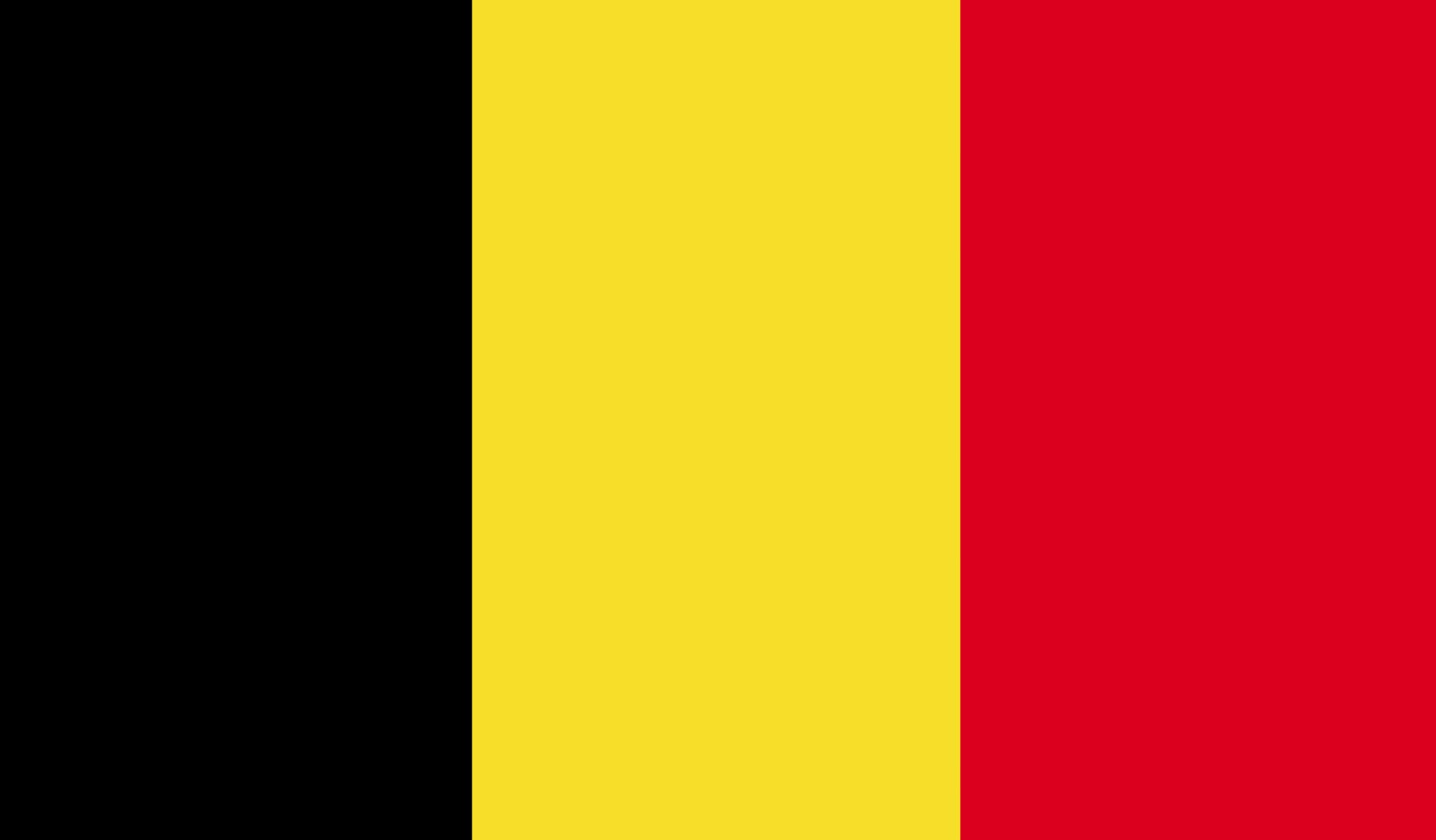
Historical Landmarks And Architecture İn Belgium
Belgium is a country with a rich cultural and historical heritage, evidenced by the numerous historical landmarks and stunning architecture scattered throughout the country. Belgium has been a crossroads of different civilizations for centuries, which is reflected in the country’s diverse architectural styles. From ancient Roman ruins to Gothic cathedrals, the country has it all.
For history buffs, a visit to Belgium is a dream come true. The city of Bruges, for example, is a UNESCO World Heritage site, known for its well-preserved medieval architecture. The city’s Belfry and Halle are excellent examples of Gothic architecture. Both buildings are over 800 years old and were crucial to the city’s economic and political power in the Middle Ages. The picturesque market square of Bruges is also a major tourist attraction, showcasing several historical buildings that boast impressive architecture.
Another significant landmark in Belgium is the Atomium in Brussels. Built in 1958 for the World Exhibition, the Atomium was designed by André Waterkeyn to symbolize the country’s technological progress. The Atomium stands at an impressive height of 102 meters and consists of nine interconnected spheres. Visitors can take a lift to the highest sphere and enjoy panoramic views of Brussels.
- The Palais de Justice in Brussels is a stunning example of neoclassical architecture. The Palais is one of the largest courthouses in the world, covering an area of over 26,000 square meters. The building was constructed between 1866 and 1883 and has a colossal dome that is visible from several points around the city. The Palais de Justice was designed to be a symbol of Belgium’s legal system and still serves as a working courthouse today.
- Ghent is another Belgian city famous for its architectural wonders. The Gravensteen castle is a must-see attraction for anyone visiting Ghent. This imposing castle dates back to the 12th century and has been remarkably preserved over the years. Visitors can explore the castle’s narrow passages and climb to the top of the tower for breathtaking views of the city.
Belgium is a country of endless surprises and exciting discoveries for those interested in architecture and history. The country’s rich cultural heritage is reflected in its numerous historical landmarks and stunning architecture. There is something for everyone in Belgium, and it is definitely worth exploring to learn more about its fascinating history.
Exploring The Charming Cities Of Flanders
Belgium has always been a country of charm and allure, and it’s no surprise that it attracts a countless number of tourists every year. The cities of Flanders are the quintessence of this charm and allure, where visitors can witness the fusion of medieval and modern elements. The region is filled with an immense amount of history, culture, and of course, fantastic Belgian cuisine that will make you want to stay longer. So, let’s explore the inviting cities of Flanders and everything they have to offer.
Flanders is the northernmost region of Belgium, situated between the Netherlands and France. The region has a rich history, and its cities are filled with architectural gems that take guests back to the Middle Ages. Bruges, known as the Venice of the North, is one of the must-visit cities of Flanders. The city is famous for its canals, cobbled streets, and Gothic architecture. The Belfry of Bruges, which is a medieval bell tower, is a World Heritage Site and offers a stunning view of the city from the top.
- Ghent, another iconic city of Flanders, is the perfect blend of tradition and modernity. You can walk along the picturesque canal-lined streets and see the impressive Graslei and Korenlei buildings with their vibrant facades. St. Bavo’s Cathedral, the Castle of the Counts, and the Ghent City Museum are just a few of Ghent’s highlights.
- Antwerp, Belgium’s second-largest city, is an ideal spot for those who love fashion, art, and history. The city’s center is filled with trendy boutiques and hip cafes, while the outskirts are adorned with medieval buildings and impressive museums. One can’t leave Antwerp without visiting Rubenshuis, home to the famous Baroque painter Rubens.
| City | Why Visit? |
|---|---|
| Bruges | Medieval architecture, Canals, Chocolates, and Waffles |
| Ghent | Historic sites, cuisine, and art scene of Flanders |
| Antwerp | Galleries, boutiques, museums, and Rubenshuis |
Flanders has so much to offer, and these three cities are just the start. Other cities to explore include Mechelen, Leuven, and Ypres. So, make sure to include Flanders as a destination on your travel bucket list and let its charm and allure sweep you off your feet!
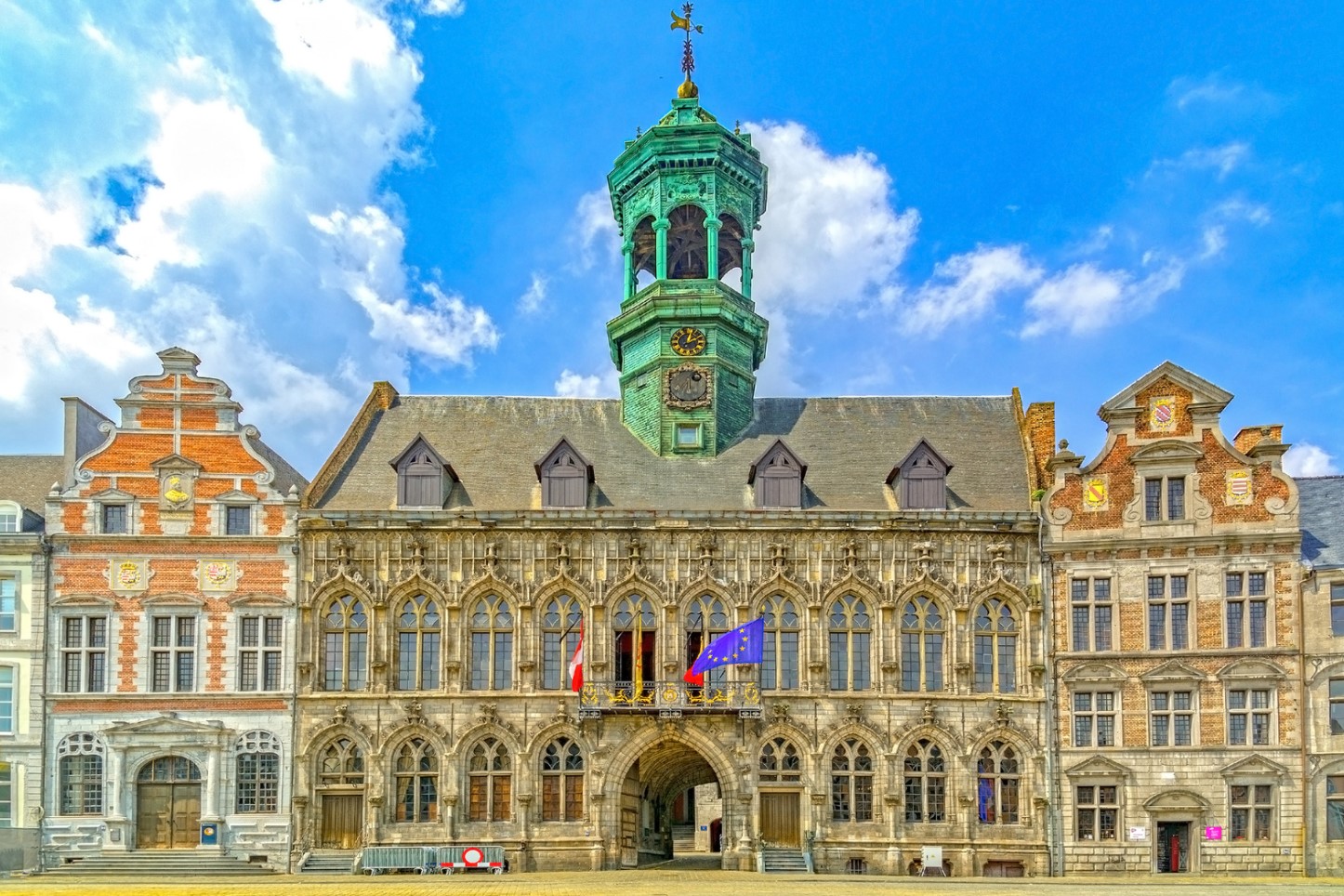
Discovering The Beauty Of Wallonia’s Countryside
Wallonia is the French-speaking region of Belgium, known for its beautiful countryside that offers a serene escape from the hustle-bustle of city life. With vast forests, rolling hills, picturesque farmlands, and serene rivers and streams meandering through the region, Wallonia’s countryside beckons you to explore its natural beauty. Let’s delve into what makes Wallonia’s countryside so special.
The Ardennes Forest – A Natural Gem
The Ardennes, a region that spans Belgium, France, Luxemburg, and Germany, is home to one of the last pristine forests in Europe. In Wallonia, the Ardennes’ majestic natural beauty can be seen in Han-sur-Lesse, where the subterranean caves attract visitors from all over the world. The Ardennes also has picturesque small towns like La Roche-en-Ardenne, which is centered around a hilltop castle and offers panoramic views of the surrounding hills and valleys.
Les Plus Beaux Villages de Wallonie – The Most Beautiful Villages of Wallonia
‘Les Plus Beaux Villages de Wallonie’ is a label that recognizes the beauty and heritage of small villages in Wallonia. These villages have unique character and charm, with charming streets and buildings that take you back in time. Some of the most beautiful villages in Wallonia include Crupet, Chardeneux, and Celles.
Outdoor Activities Galore
Wallonia is a haven for outdoor enthusiasts, with options ranging from hiking in the Ardennes to kayaking on the River Lesse to cycling through picturesque countryside. Wallonia also offers unique experiences like sleeping in a tipi or a gypsy caravan, allowing you to immerse yourself in nature fully.
In conclusion, Wallonia’s countryside is a treasure trove of natural beauty, steeped in history, and offering unique experiences that make it a must-visit destination for travelers of all kinds. Whether you are looking for adventure or serenity, Wallonia’s countryside will leave you enamored and wanting more.
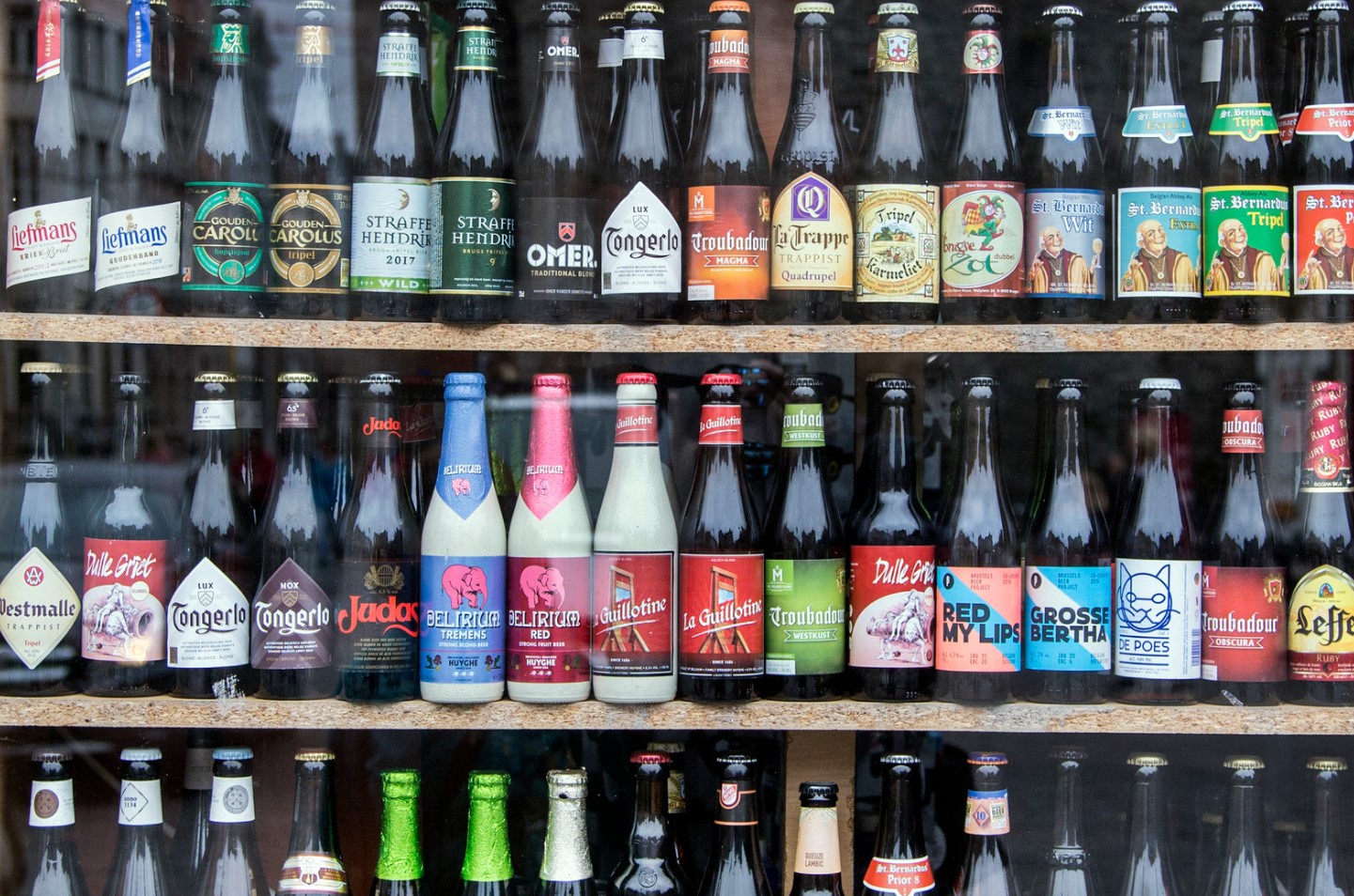
Belgian Beer Culture And Brewing Traditions
Belgium is a country that boasts some of the finest beers in the world. The country’s beer culture and brewing traditions date back centuries and are deeply ingrained in its national identity. Belgian beer is so important that it is recognized as one of the country’s cultural heritages by UNESCO. There are over 1,000 different types of beer produced in the country, making it one of the most diverse beer cultures on the planet. Belgian beer’s unique taste and characteristics are a result of the country’s brewing traditions and the use of local ingredients.
A key aspect of Belgian beer culture is the vast array of styles and flavors that are available. Belgian brewers utilize a range of ingredients such as hops, malt, yeast, and spices to create a diverse range of beers, ranging from pale ales to lambic. Many of these beers are brewed by artisanal brewers who follow traditional brewing methods, which are passed down through generations.
- Trappist Beer
- Lambic Beer
- Witbier
- Saison
Belgium takes its beer so seriously that it has a beer-drinking etiquette. It is common practice in cafes and pubs for bartenders to serve beers to customers in their respective glasses. Additionally, each beer style requires a different type of glass which is meant to bring out the beer’s flavor and aroma. For instance, a lambic beer is served in a champagne flute glass.
| Beer Culture in Belgium | Brewing Traditions |
|---|---|
| Belgium is famous for its beer culture, which has been shaped by centuries of brewing traditions. | The country’s brewing traditions date back to the Middle Ages when monks brewed beer in their abbeys. |
| Today, Belgium is home to over 160 breweries, including Trappist abbeys that produce some of the world’s most sought-after beers | Belgian brewers utilize a range of ingredients such as hops, malt, yeast, and spices to create a diverse range of beers, ranging from pale ales to lambic. |
Belgian beer culture and brewing traditions are a significant part of the country’s national identity. Visitors to the country should take the time to explore its beer culture by visiting traditional breweries, tasting rooms, and participating in beer festivals. By doing so, they can gain an appreciation for the creativity, tradition, and passion that go into the country’s world-famous beers.
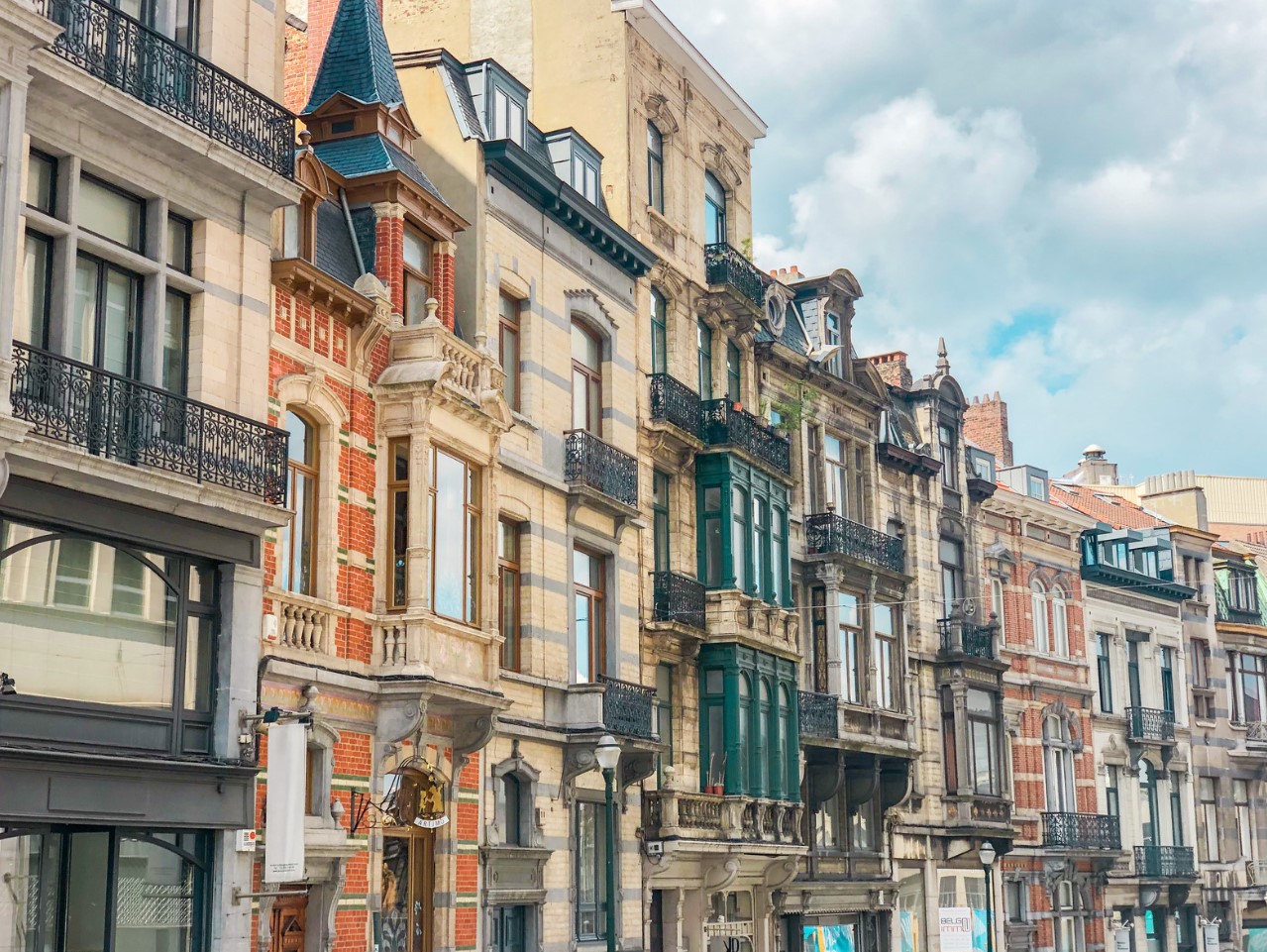
Exploring The Vibrant Street Art Scene İn Brussels
Brussels, the capital city of Belgium, is known for its vibrant street art scene. Its streets and alleys are filled with stunning murals, graffiti, and other forms of urban art. The city attracts artists and tourists from all over the world, making it a hub for street art culture. If you are a lover of art and culture, then you should definitely visit Brussels to witness its captivating street art.
One of the most famous locations for street art in Brussels is the Saint-Gilles neighborhood. Here, you will find colorful and intricate murals on almost every street. The district is also home to the annual ‘Parcours Street Art’ festival, where artists from around the world come together to showcase their work.
If you want to explore the city’s street art scene further, it’s best to take a guided walking tour. Many tour companies offer guided street art tours that take you to the most popular spots and hidden gems. These tours are a great way to learn more about the history and cultural significance of street art in Brussels.
- Don’t forget to take your camera with you on the tour. The city’s street art scene is perfect for photography enthusiasts, and you can capture some outstanding shots.
- Be respectful of the art and the artists who created it. Do not damage, deface or remove any street art. It is a form of expression and deserves to be treated in the same way as any other piece of art.
- Look out for the hidden treasures. Some of the best street art in Brussels is hidden away in alleyways and side streets. So, don’t be afraid to follow your curiosity and explore areas off the beaten track.
In conclusion, Brussels is a city that should not be missed by any art lover. Its street art scene is a testament to the city’s rich culture and history. So, take a trip to Brussels and explore the vibrant and captivating world of street art.
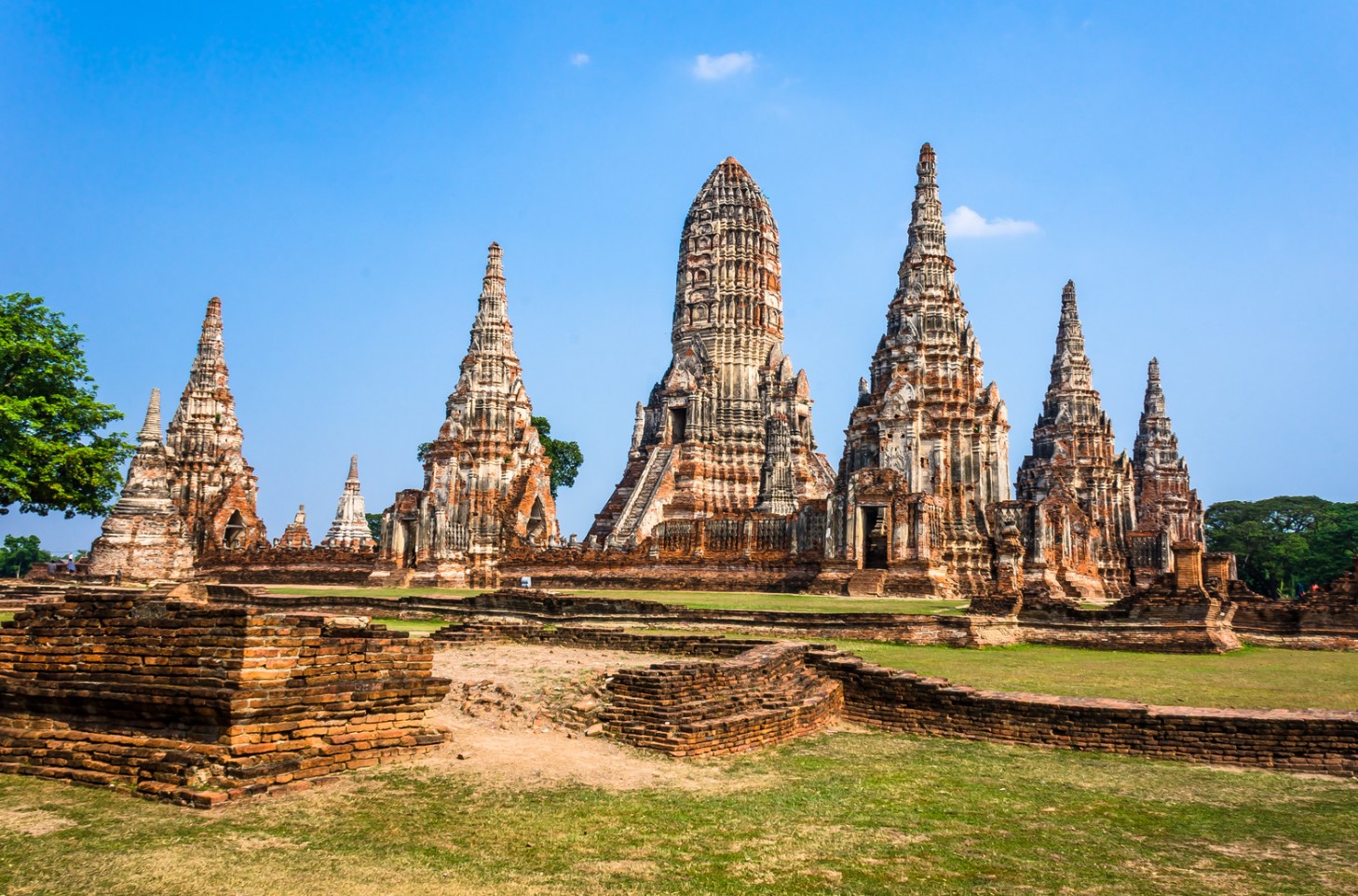
Visiting The UNESCO World Heritage Sites İn Belgium
Belgium is known for its rich culture and unique heritage, and one of the best ways to experience this first-hand is by visiting the UNESCO World Heritage Sites scattered throughout the country. These sites have been recognized for their cultural or natural significance, and offer visitors a glimpse into the country’s history and beauty. Here are just a few of the must-see UNESCO World Heritage Sites in Belgium:
- The Belfries of Belgium and France: This serial site consists of 56 different belfries located in various cities throughout Belgium and France. These belfries were used as watchtowers throughout the Middle Ages, and their distinct architecture and history make them an important cultural landmark.
- The Flemish Béguinages: These historic settlements were created in the 13th century as places for women to live outside of the traditional monastic system. They were designed to be self-sustaining communities, complete with their own chapels and communal spaces. Today, they are recognized as an important example of medieval female spirituality and community life.
- La Grand-Place, Brussels: This historic square in the heart of Brussels is a must-see for anyone visiting the city. Its stunning architecture and cultural significance make it one of the most popular tourist destinations in Belgium. The buildings surrounding the square date back to the 17th century and feature intricate Baroque and Gothic designs.
These sites are just the tip of the iceberg when it comes to the rich cultural heritage of Belgium. Whether you’re interested in history or architecture, natural beauty or religious heritage, there is something for everyone to enjoy when visiting these UNESCO World Heritage Sites. Be sure to add a few of these destinations to your Belgian travel itinerary for an unforgettable trip!
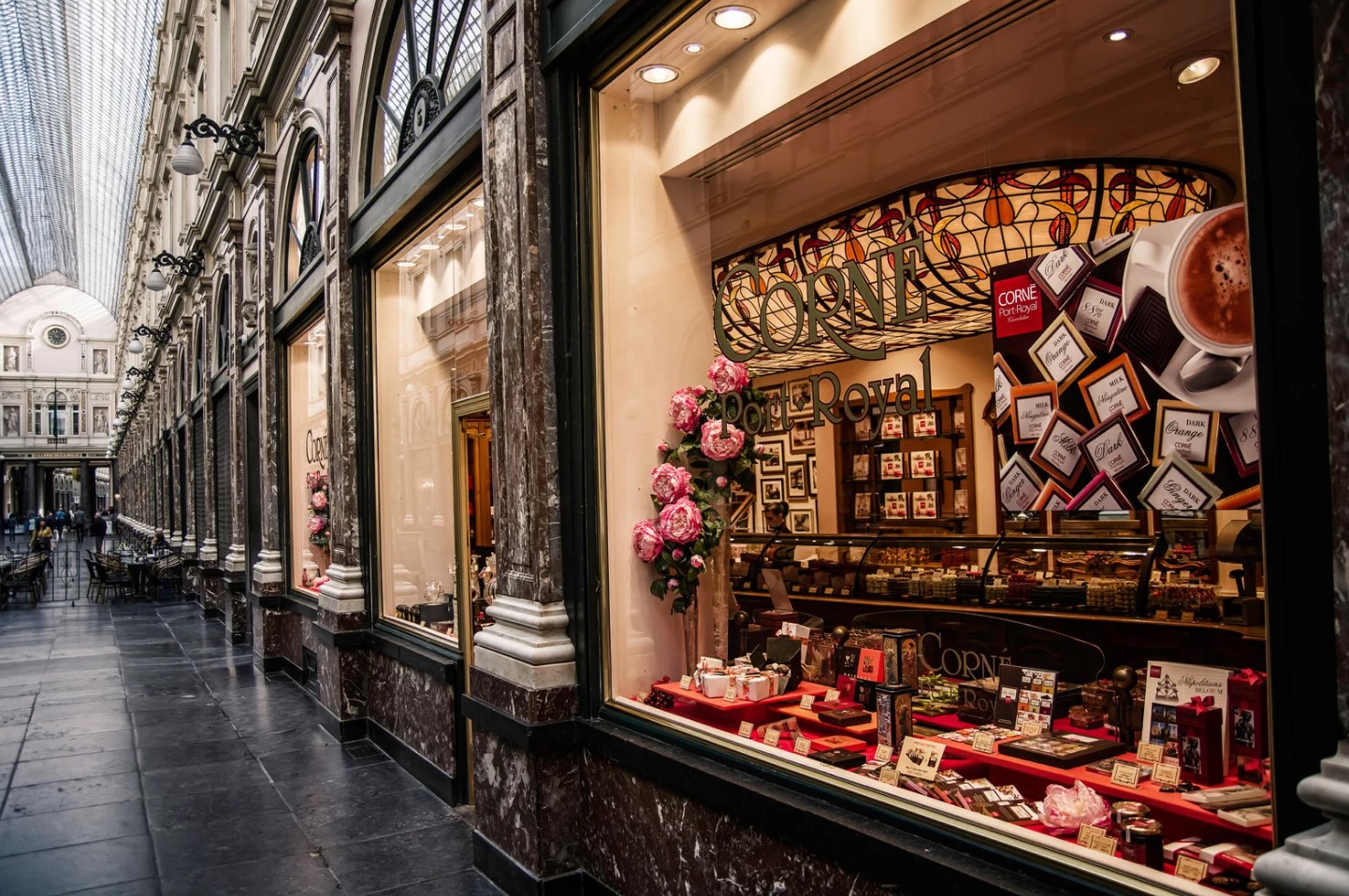
The Cultural Significance Of Chocolate İn Belgium
Belgium is known for many great things such as Belgian waffles and beer. However, one of its most notable exports is chocolate. Belgians take their chocolate seriously and it’s not just any chocolate – it’s the finest chocolate in the world. Chocolate is deeply rooted in Belgian culture and has been a significant part of their national identity for centuries. In this blog post, we will take a look at the cultural significance of chocolate in Belgium and why it’s much more than just a sweet treat.
Belgium’s reputation as the world’s chocolate capital is due to its high standards of quality and innovation. Belgian chocolate is made using only the purest ingredients, from the cocoa beans to the milk and sugar. The country also boasts some of the most acclaimed chocolatiers in the world, many of which can be found in the capital city Brussels. The chocolate-making process is taken very seriously in Belgium and many chocolatiers are known for their unique and creative flavor combinations.
- Some of the most famous Belgian chocolate brands include:
- Godiva
- Neuhaus
- Leonidas
- Pierre Marcolini
Chocolate’s cultural significance in Belgium can be traced back to the 1700s when cocoa beans were first imported from the Spanish colonies. The chocolate industry grew rapidly and soon chocolate became a national symbol. Today, Belgian chocolate remains one of the country’s biggest and most important industries, employing thousands of people and generating billions of dollars in revenue.
Chocolate is not just a tasty treat in Belgium, it’s a way of life. It’s a source of pride and a reflection of the country’s identity. Belgians celebrate chocolate in all forms and during all seasons. For example, the country hosts numerous chocolate festivals and events throughout the year, including the Brussels Chocolate Week.
In Belgium, chocolate is not just a commodity – it’s an expression of artistry and craftsmanship. It’s a reflection of the country’s history, culture, and identity. Whether you’re a chocolate lover or not, you cannot deny the cultural significance of chocolate in Belgium.
The İnfluence Of Flemish Art On The Country’s Culture
Flemish art has left an indelible mark on the art world, and its influence has not just been limited to art but also in Belgium’s culture as a whole. Artists like Jan van Eyck, Rogier van der Weyden, and Pieter Bruegel the Elder were all Flemish painters that played a pivotal role in the art movement.
The Flemish art style was characterized by the use of oil paints, realism, and religious themes. The use of oil paints allowed painters to create a more realistic look, which was not possible with traditional paint. The art style was also heavily influenced by religion, with many paintings and sculptures depicting biblical scenes. Flemish art was also known for its attention to detail, with artists spending months or even years on a single piece.
- Flemish art not only had an impact on the art world but also on the country’s culture as a whole.
- The realistic style and attention to detail made Flemish art stand out, making it a popular choice for commissions.
- Religious themes also had an impact on Belgian society and culture. Religion was an integral part of everyday life, and many churches commissioned paintings and sculptures for their altars and halls.
Flemish art has also had a lasting impact on Belgium’s architecture. Many buildings and churches throughout Belgium were built during the Flemish art era and feature intricate details and designs inspired by Flemish art. The stately architecture, combined with the art and the surrounding countryside, has helped create a unique identity for Belgium.
In conclusion, Flemish art has had a significant impact on Belgium’s culture and has helped shape the country as we know it today. The realistic style, attention to detail, and religious themes remain important influences on Belgian art and culture.
Hiking And Outdoor Activities İn The Ardennes Region
Hiking and outdoor activities are some of the most popular things to do in the Ardennes region. Situated in the southeast of Belgium, this area is a beautiful and peaceful place to explore nature. The Ardennes region has a diverse landscape, including forests, valleys, rivers, and hills.
If you’re an adventurous person and love outdoor activities, the Ardennes is an excellent destination for you. This region offers many outdoor activities that are sure to keep you busy for several days. Hiking is the most popular activity here, and there are many trails to choose from. Whether you’re a beginner or an experienced hiker, there are trails suitable for all skill levels.
- The “Transardennaise” trail is the most popular hiking trail in the Ardennes, and it covers more than 160 kilometers from La Roche-en-Ardenne to Bouillon.
- The “Grande Randonnée” (GR) trails are a network of long-distance footpaths that run through Belgium and France. The GR 16 trail runs through the Ardennes region and is over 250 kilometers long.
If you’re up for a challenge, you can try rock climbing, mountain biking, or kayaking in the Ardennes. There are many places where you can rent equipment and get guidance from experienced instructors.
| Activity | Location |
|---|---|
| Rock Climbing | Freyr, Pont-à-Lesse, and Freyr are some popular spots to rock climb in the Ardennes. |
| Mountain Biking | There are many trails throughout the Ardennes where you can rent a mountain bike and explore the countryside. |
| Kayaking | The rivers of the Ardennes are well-suited for kayaking. You can rent a kayak and travel down the River Lesse or the River Semois. |
No matter what activity you choose, you’ll love the scenery and the peaceful atmosphere of the Ardennes. There are many campsites and holiday homes in the area, making it easy to stay and enjoy the outdoor activities for a few days. Bring your family and friends along to experience the beauty and adventure of the Ardennes together.
The Significance And Symbolism Of Belgian Waffles
Belgium is known for its delectable treats, from chocolates to beers to waffles. Among the most beloved is the Belgian waffle, a crispy, golden delight that is popular both locally and globally. Not only does it taste amazing, but it also has a rich history and cultural significance.
Belgian waffles have been around since the Middle Ages, when bakers would make thin, crispy wafers that were often sold at church fairs. Over time, the recipe evolved and became thicker and fluffier, eventually giving birth to the modern Belgian waffle that we know and love today.
- The waffle’s shape, which has deep pockets and squared edges, is representative of its Belgian origin.
- However, the waffle has also become a symbol of Brussels, where it is often sold by street vendors and enjoyed with powdered sugar or whipped cream.
The waffle has also become a cultural icon and a source of national pride. In fact, in 1964, Brussels held a “World Waffle Championship,” which attracted chefs and enthusiasts from around the globe. Belgian waffles are now enjoyed all over the world, and have become a staple at breakfast restaurants and cafes.
| Types of Belgian Waffles: | Description: |
|---|---|
| Brussels Waffle | lightly sweetened, rectangular waffles with deep pockets |
| Liege Waffle | sweet, dense, and chewy waffles that are usually smaller and rounder |
| Gaufre de Liège | similar to Liege waffles, but with a thicker dough and larger pearl sugar crystals |
Belgian waffles are not just a delicious breakfast food; they are also a representation of Belgian culture, history, and tradition. Whether enjoyed with sweet toppings or savory, the waffle is a beloved treat that continues to delight people of all ages and backgrounds.
A Guide To Visiting The Famous Christmas Markets İn Belgium
If you are planning a trip to Belgium during the holiday season, you are in for a treat! Belgium’s famous Christmas markets are an essential part of the country’s holiday traditions. As soon as November arrives, the streets are decorated with lights and holiday cheer as locals and tourists alike make their way to the Christmas markets. These markets offer a variety of festive activities, traditional delicacies, and unique local crafts that you won’t find anywhere else in the world. So, let’s dive into everything you need to know to plan your visit to the famous Christmas markets in Belgium.
The Christmas markets in Belgium are spread across various cities, but the most popular ones are found in Brussels, Bruges, and Ghent. Each market has its unique charm and style, but they all have something in common: twinkling lights, live music, and delicious treats. The Brussels Christmas market is known for its ice-skating rink, while the Bruges market offers horse-drawn carriage rides. Ghent boasts a Ferris wheel that offers breathtaking views of the city. The markets in Antwerp and Liege are also worth checking out if you have time.
When it comes to food, there are endless options to indulge in. Chocolates, waffles, and speculaas cookies are all popular choices. However, the real star of the show is the mulled wine, or Glühwein as it’s called in Belgium. It’s a warm and spicy drink that’s perfect for sipping as you stroll through the market. You can also find local beer and jenever, a Belgian gin that’s often served in tiny shot glasses.
| Christmas Market | Location | Opening Dates |
|---|---|---|
| Brussels Christmas Market | Brussels | November – January |
| Bruges Christmas Market | Bruges | November – January |
| Ghent Christmas Market | Ghent | December |
| Antwerp Christmas Market | Antwerp | December – January |
| Liege Christmas Market | Liege | November – January |
Lastly, don’t forget about the shopping opportunities. The markets are filled with vendors selling handmade crafts, unique gifts, and traditional holiday decorations. Though they may not be the cheapest items you find, they’ll be cherished souvenirs for years to come.
Overall, visiting the Christmas markets in Belgium is an unforgettable experience that should not be missed. Whether you’re traveling with friends, family, or alone, the festive atmosphere, delicious food, and unique gifts make it a trip to remember. So, grab a cup of Glühwein and join in the holiday spirit as you wander through the magical markets in Belgium.
Highlights Of The Belgian Music Scene
Belgium may be a small country, but it has an incredibly diverse and lively music scene that reflects its unique culture and history. From classical to rock, jazz to electronic, there is something for everyone in this musical wonderland. Here are some of the highlights of the Belgian music scene that you should explore on your next trip.
1. Jazz in Brussels
Brussels has a vibrant jazz scene that attracts both local and international musicians. One of the most famous venues is the Ancienne Belgique, which has hosted legends such as Nina Simone and Miles Davis. The city also hosts an annual Jazz Festival in January, showcasing the best of contemporary jazz music.
2. Music Festivals
Belgium is world-renowned for hosting some of the biggest and most exciting music festivals in Europe. Tomorrowland, held in Boom every July, is an electronic dance music extravaganza that attracts over 400,000 visitors from around the world. Other famous festivals include Rock Werchter, Pukkelpop, and Couleur Café, showcasing a variety of music genres from pop to rock and world music.
3. Classical Music
Belgium has a rich tradition of classical music, with famous composers such as Adolphe Sax and César Franck hailing from the country. The country’s national orchestra, the Belgian National Orchestra, performs regularly at the Brussels Centre for Fine Arts and other venues across the country. Classical music enthusiasts can also attend the Queen Elisabeth Competition, one of the most prestigious music competitions in the world.
In conclusion, the Belgian music scene has something for everyone, with its diverse and exciting range of genres and performances. Whether you are a fan of jazz, rock, electronic, or classical music, you are sure to find something that will make your heart sing in this musical wonderland.
Discovering The Country’s Thriving Fashion İndustry
Belgium may be a small country, but when it comes to the world of fashion, it is a force to be reckoned with. Producing renowned designers such as Dries Van Noten, Raf Simons, and Maison Margiela, Belgium has carved out a niche for itself in the global fashion scene. But what makes the country’s fashion industry so successful? Let’s take a closer look.
Firstly, a key factor in Belgium’s thriving fashion industry is its strong educational system. The country has several top-tier fashion schools, such as the Royal Academy of Fine Arts Antwerp, which boasts alumni like Van Noten and Simons. These schools provide students with the skills and knowledge needed to succeed in the industry, as well as valuable connections and internships with established designers.
- Secondly, Belgium’s fashion industry is known for its avant-garde and experimental approach. Designers from the country often push boundaries and challenge traditional norms, creating unique and unexpected pieces. This has garnered attention and acclaim from the international fashion community and helped to put Belgium on the map.
- Thirdly, the country has a strong tradition of craftsmanship and attention to detail. Belgian designers are known for their meticulous workmanship and use of high-quality materials, ensuring that their garments are not only beautiful but also well-made and long-lasting.
In addition to these factors, Belgium’s fashion industry also benefits from its location within Europe. With easy access to fashion capitals like Paris, Milan, and London, designers and brands have ample opportunities to showcase their work and connect with potential buyers and investors.
| Renowned Belgian Fashion Brands | Signature Styles |
|---|---|
| Dries Van Noten | Printed fabrics, eclectic color combinations |
| Maison Margiela | Deconstructed designs, unconventional materials |
| Ann Demeulemeester | Monochromatic palette, romantic and gothic elements |
| Raf Simons | Clean lines, minimalist aesthetic |
Belgium’s fashion industry is certainly an impressive one, and a testament to the country’s creativity, innovation, and attention to detail. Whether you’re a fashion enthusiast or simply appreciate well-made clothing, there’s no denying the impact that Belgian designers have had on the global fashion landscape.
The Cultural İmportance Of Carnival And Parade Celebrations İn Belgium.
The Carnival and Parade celebrations in Belgium are a significant part of its culture, and it is no wonder that they attract tourists from around the world. These events are a vibrant and lively part of Belgium’s cultural heritage, and they occur throughout the country each year. The festivities usually take place before the Lent period and are celebrated with much fanfare in all major cities in Belgium. People from different regions, religions, and age groups come together to celebrate the vibrant festivals.
The Carnival and Parade celebrations in Belgium have always been a way for people to let loose and enjoy themselves, dating back more than 500 years. At that time, the religious association in Belgium used to hold parades to ward off evil spirits on the Christian feast of Candlemas. The parades later evolved to a more secular form, and the Carnivals and Parade celebrations became an opportunity for people to showcase their creativity and artistic talent.
The Belgian Carnivals and Parade celebrations are an essential part of the country’s culture, and the people have preserved their customs and traditions over the years. Each parade or carnival has its unique way of celebrating, with participants in colorful costumes dancing to live music. The residents of each city dress up in their traditional costumes, and different groups take part in the procession with dancers and musicians performing along the way. The floats, costumes, and masks are visually stunning, and the energy emanating from the crowds is infectious.
- The most famous Carnival and Parade celebrations in Belgium is the Carnival de Binche, which takes place in the town of Binche near Charleroi. This carnival has been recognized as a UNESCO World Heritage event and is the most prominent Carnival event in Belgium.
- The Aalst Carnival is another famous carnival in Belgium and is known for its satirical and humorous displays. This carnival is celebrated on the Sunday, Monday, Tuesday and Wednesday preceding Ash Wednesday and is a fun-filled event with festivities that include singing, marching, and dancing.
- The Carnival of Stavelot is a traditional carnival that includes a street procession with floats, music, and dancing. The carnival takes place three days before Lent and is one of the oldest carnival celebrations in Belgium.
These Carnivals and Parade celebrations in Belgium are not only about fun and entertainment but also have a significant cultural importance. They bring people of different backgrounds together to celebrate their common historic heritage, and they reflect the country’s rich culture and diversity. They are an opportunity for people all over the country to gather in one place to share their customs and to showcase Belgium’s vibrant culture to the rest of the world.